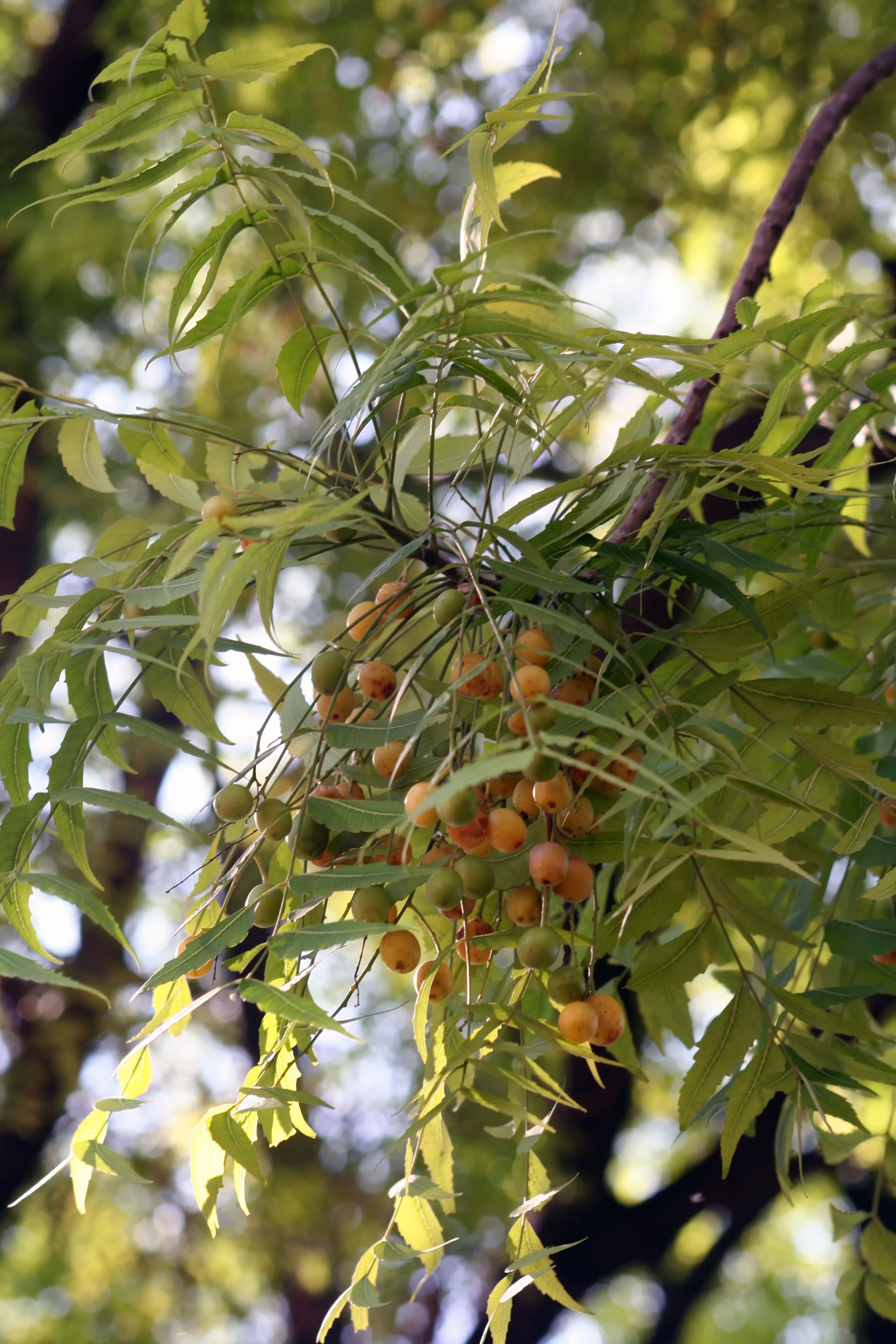 Photo: Neem Tree (Azadirachta indica) by James Pendleton © 2018
Photo: Neem Tree (Azadirachta indica) by James Pendleton © 2018
Since many modern pharmaceuticals owe their origins to medicinal herbs, it may seem only logical to use those plants in lieu of drugs in the management of health conditions. Additionally, there is an assumption in the United States population that if something is "natural" it is safer than pharmaceutical medication. Unfortunately, some herbal preparations are toxic, or don't measure up to the claims insinuated by marketing. When this happens, consumers assume that plant medicines are either dangerous, or don't work. Thus, a powerful resource is discredited.
Complex Factors Determine Medicinal Herb Potency
Several factors impact the efficacy of herbal materials in medicinal formulas. Reasons for ineffective medicinal herbs include:
• incorrect dosage
• incorrect cultivation and harvesting
• wrong parts used
• use of incorrect species
• faulty processing procedures
Dosage Shortfalls
Medicinal herbs are often dosed at very low levels that will at best achieve a placebo effect. Some manufacturers include only small amounts of an herb and blend it with others in a "proprietary formula." This allows them to state the herb is in the formula, but not disclose the exact amount. Expect this when an herbal material is rare and expensive. Sometimes strong herbs are diluted down by the manufacturer out of legal concerns that the preparation will not be used properly by consumers. Expect this when working with powerful materials known to exhibit adverse effects.
Cultivation and Harvesting Effects Herbal Potency
Plants are factories for special compounds called secondary metabolites. Secondary metabolites may have pharmacological effects and are the basis for many drugs. These chemicals are often used for defensive purposes, especially when the plant experiences adverse conditions. When conditions are optimal, the plant may not expend the energy required to make these compounds. Therefore, mass-cultivation of crops like ginseng and Echinacea may possibly result in the loss of potency and biological effect.
Concentrations of chemicals are often unique to a plant species and vary with season, age, and part of plant used. Some compounds are only found in young leaves while others,in roots that are several years old. Processing procedures may further impact herbal potency. Grinding of plant materials may generate heat that destroys volatile compounds. Some plant compounds may be extracted from crude materials using water or alcohol as a solvent. These solvents are selective for certain compound types and often neglect others.
Incorrect Use of Species
Sometimes, similar species of an herb have different properties. One species may be substituted for another out of ignorance or due to cost concerns. For example, cheap spike lavender (Lavandula latifolia) is often substituted for expensive English lavender (Lavandula angustifolia). This is important since while English lavender is considered calming, spike lavender is stimulating.
All these considerations must be addressed in the creation of a working herbal formula. When these factors are ignored, formulas don't work and give the industry a bad name.
Resources
Ahmed, M. “Herbal Medicine: Is It Really Safe?” Journal of Genetic Syndromes & Gene Therapy (2012).
Calixto, J. B. “Efficacy, Safety, Quality Control, Marketing and Regulatory Guidelines for Herbal Medicines (phytotherapeutic Agents).” Brazilian Journal of Medical and Biological Research 33, no. 2 (2000): 179–189.
Chen, Y., Q. Guo, et al. (2012). "Changes in bioactive components related to the harvest time from the spicas of Prunella vulgaris." Pharm Biol 50(9): 1118-1122.
De Smet, P. A. G. M. “Overview of Herbal Quality Control.” Drug Information Journal 33, no. 3 (1999): 717–724.
Garrard J, Harms S. “Variations in Product Choices of Frequently Purchased Herbs: Caveat Emptor.” Archives of Internal Medicine 163, no. 19 (October 27, 2003): 2290–2295.
Huang, J. and A. Zhao (2010). "[Analysis of dynamic change of huperzine A content in Huperzia serrata]." Zhongguo Zhong Yao Za Zhi 35(19): 2511-2515.
Peter Houghton and Pulok K. Mukherjee, Evaluation of Herbal Medicinal Products, 1st ed. (Pharmaceutical Press, 2009).
Myerscough, M. “Herbal Remedies-how Much Do You Know?” Australian Family Physician 27 (1998): 1037–1040.
Sahoo, N., P. Manchikanti, and S. Dey. “Herbal Drugs: Standards and Regulation.” Fitoterapia 81, no. 6 (2010): 462–471.
Se Yun et al., “Wild ginseng prevents the onset of high-fat diet induced hyperglycemia and obesity in icr mice,” Archives of Pharmacal Research 27, no. 7 (July 1, 2004): 790-796.
Straus, S. E. “Herbal Medicines—What’s in the Bottle?” New England Journal of Medicine 347, no. 25 (2002): 1997–1998.